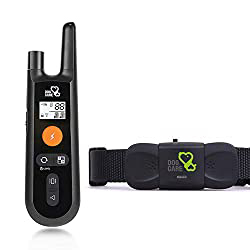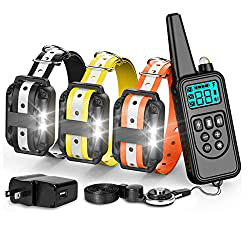
No matter what anyone tells you, all training collars for dogs are not alike. There are plenty of different models. Therefore, different models produce different results.

For example, using a bark collar is for stopping dogs from barking. Simultaneously, a sport collar is used for training high energy and over-active dogs like a Labrador retriever.
What about the shock collar? Many people question whether this form of training is humane. In my honest opinion, the decision whether it is humane or not comes down to the owner who’s using it.
In addition to bringing up questions of whether it is humane to use training collars for dogs that shock, what if I was to ask a critic of this form of training whether it would be humane to let a dog bite a person on the street?

Or, is it humane to let your dog bark all night and wake up the neighbors, who could call the police, which could end up with the dog being taken to a shelter and eventually put to sleep. Is that humane?
Using a dog barking collar is probably one of the quickest ways to stop a dog from barking. When you place the dog in the backyard, the barking will undoubtedly get worse for the simple fact that there is no one outside to discipline the dog.
Training Collars For Dogs: Barking
If you’re someone that has had to get up in the middle of the night to calm down a barking dog, then I’m sure you would not have any problems using a bark collar to remedy the situation as easy and as quick as possible.
Many training collars for dogs come equipped with hand-held remotes. This remote can transmit a warning in the form of audible or vibrating stimuli that give the dog a warning before the actual shock.
This gives the dog a chance to correct its behavior. The electrical shock that the dog experience is nothing more than the shock we feel when we rub our feet across a rug with socks. The dog owner should know how to use the stimulation properly.
Many training collars for dogs have different levels of intensity. When it comes to their tolerance of pain, dogs are just like us in many ways. The humane issue comes up around this time.
If a dog can learn while using a low-intensity shock, then why is a higher intensity needed?
To answer this question, I’ve personally seen dogs that didn’t even wink an eye while being shocked at the lower intensity. Also, I’ve seen dogs that reacted strongly to being shocked at the lower intensity.
Therefore, using training collars for dogs is totally up to the owner and their present situation. I do not endorse the use of shock collars. I just wanted to shed some light on both sides of the argument.
Hopefully after reading this article, you can decide for yourself whether a shock collar is for you.





